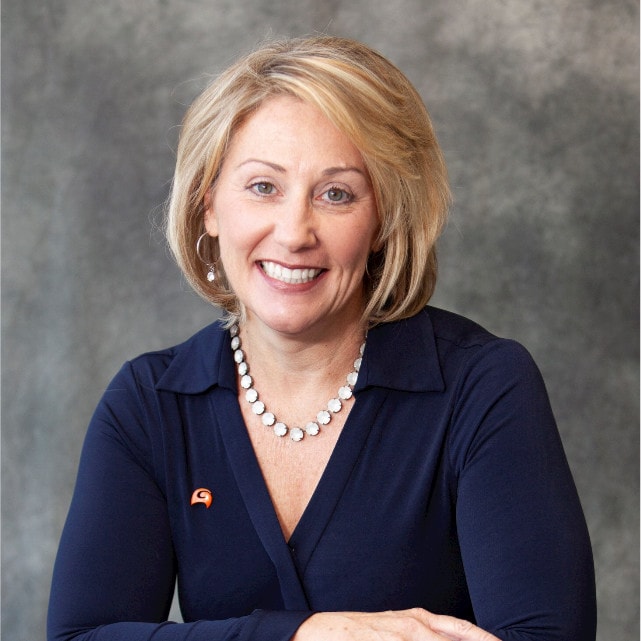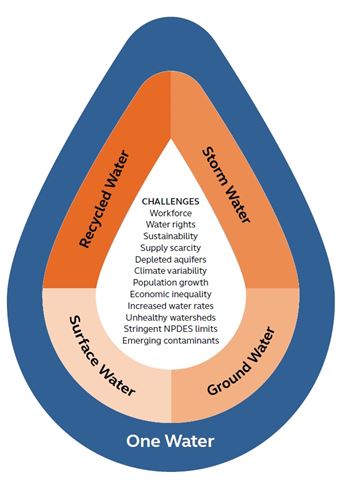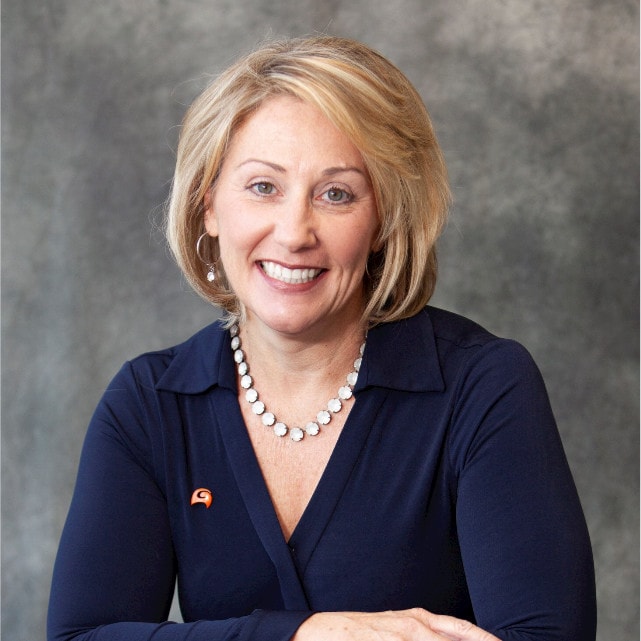Recently, I was doing a little homework to prepare for my appearance on our Fit-for-future Water Utilities Podcast for an episode on One Water. I did a deep dive on Building a fit-for-future utility to find connections worth discussing. As I pored over the stats, graphics and audio clips, I saw that the concepts aren’t just related, they’re two sides of the same coin.
The missions are the same: giving everyone safe, convenient and affordable access to potable water. One Water takes a holistic perspective toward the resource, while being fit-for-future applies a similar lens on managing the utility itself. The concepts clearly intertwine. Embracing those connections can equip your utility to burst through the obstacles to One Water success.
Becoming fit-for-future enables One Water
Becoming fit-for-future focuses on five fundamentals, all of which can enable One Water. Resilience will be fundamental to preparing our teams, facilities and water sources to thrive in a changing paradigm. Innovation and the willingness to explore new solutions will be imperative to introducing new reuse solutions at minimal costs. Equally important are the data-driven methods for managing assets, chemicals and energy described in Advanced Asset Management and Intelligent Water.
Finally, the workforce element emphasizes putting the talent in place to make digitally enabled innovation happen. Teams with diverse mindsets, backgrounds and skills will accelerate progress around the three biggest challenges facing One Water:
Challenge 1: Public education and acceptance
Without a primer on using nontraditional water supply sources such as recycled water and stormwater to create potable water, the public might resist using them. Pure Water San Diego is a prime example. In the early 2000s, the city attempted to launch Toilet to Tap. Without a sound outreach and education plan, the thought of drinking toilet water took hold and people couldn’t get past it.
About 10 years later, the city launched a rebrand focused on the outcome – pure drinking water – rather than the source. The reuse plan wasn’t all that different from before; it was as simple as teaching the public about the safety and benefits without leaving anything to the imagination. Perception is reality, so your strategy needs to weigh outreach and acceptance as heavily as technical design details. This is where the diverse fit-for-future workforce can help. A staff that reflects your customer base might have an inside track on addressing the community’s hang ups regarding One Water.
Challenge 2: Project cost funding
One Water’s revolutionary potential calls for significant upheaval of current facilities and operations. Managing the costs of upgrades will be a challenge, as affordability already threatens many utilities in business-as-usual conditions. Innovation, Intelligent Water and Advanced Asset Management can all increase efficiencies and decrease costs internally. While those internal improvements will be vital, collaboration with outside entities can amplify strengths, shore up weaknesses and unlock capital, too.
As part of our work on the City of Santa Monica’s Sustainable Water Infrastructure Project, city officials brought in a variety of organizations to design and implement new solutions to reduce dependence on imported water and improve supply diversity. Having a combination of perspectives and expertise led to more robust discussions and, ultimately, better ideas for achieving Santa Monica’s goals.
Challenge 3: Regulations
One of the toughest challenges for One Water is a lack of a regulatory framework for our new ventures into recycled water. The EPA and states dictate treatment and regulatory requirements for surface waters, but there are no federal regulations for managing and treating alternate water supply sources. From one state to the next, standards differ or don’t exist at all – some don’t even offer guidance.
Regardless of challenges, it’s a great time to get fit
While a lack of regulations might make some organizations hesitate to implement One Water strategies, it’d be prudent to at least lay a foundation. Becoming fit-for-future will do that. The comprehensive take on managing utilities will allow organizations to flow seamlessly into compliance with One Water regulations, whatever they look like.
For more on the fundamentals of fit-for-future water utilities, check out our interactive web experience and podcast series. If you have any questions on how becoming fit-for-future can help your One Water goals, connect with me directly on LinkedIn.







